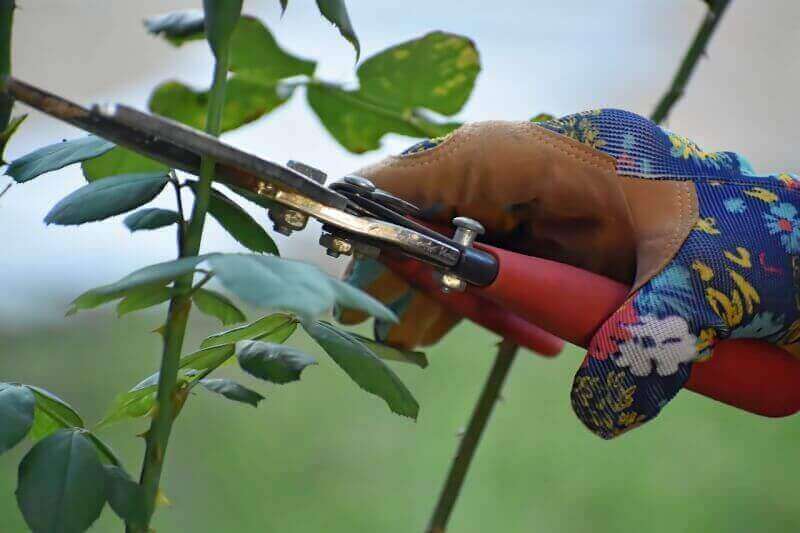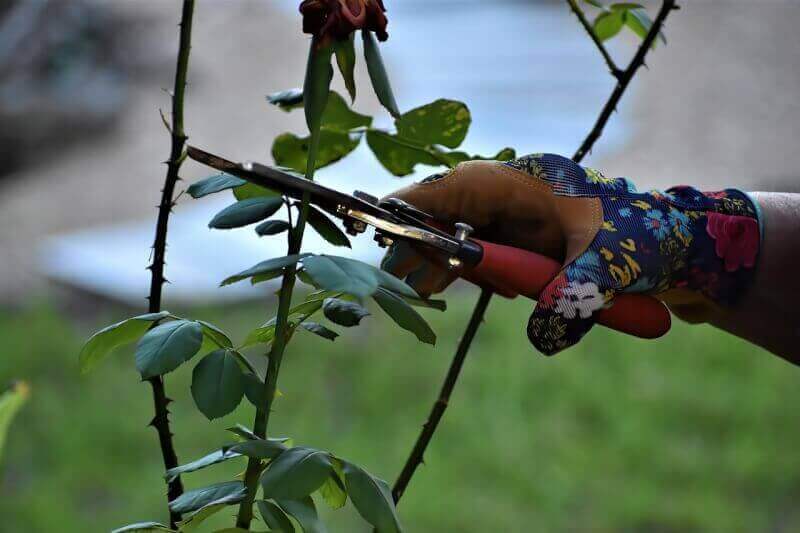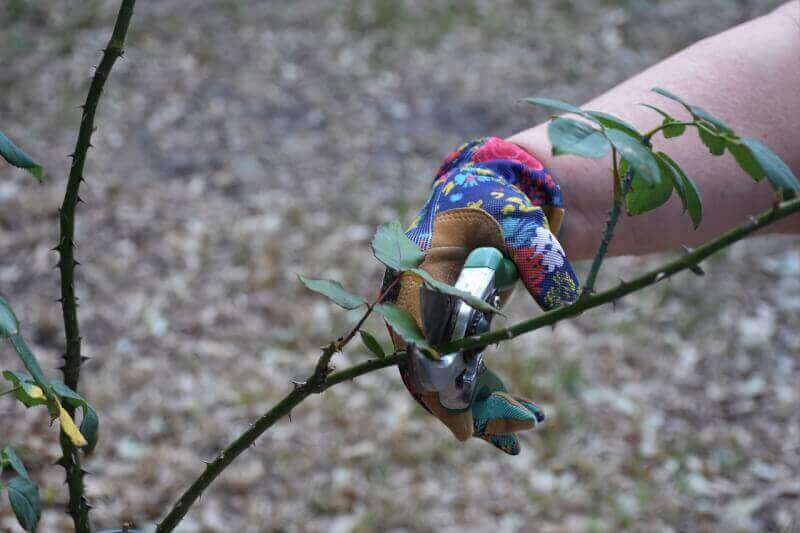Are you a rose lover looking to give your plants some much-needed attention? If so, you’ve come to the right place! In this article, we will explore the best practices for pruning roses. Whether you’re a seasoned gardener or just starting out, it’s important to know how to properly prune your rose bushes to ensure they thrive and produce beautiful blooms. So, grab your pruning shears and let’s get started on unlocking the secrets to a healthy and vibrant rose garden.
The Importance of Pruning Roses
Pruning roses is a vital aspect of rose care that should not be overlooked. It offers numerous benefits that contribute to the overall health and vigor of your roses. By taking the time to prune your roses regularly, you can promote healthy growth, enhance flower production, shape the bush, and improve air circulation within the plant.
Promotes Healthy Growth
Pruning plays a crucial role in promoting healthy growth in roses. By removing dead, diseased, or damaged wood, you eliminate potential sources of infection and disease. This allows the plant to direct its energy towards new growth and the development of strong, healthy canes. Regular pruning also stimulates the production of new shoots and encourages the plant to grow in a more compact and aesthetically pleasing manner.
Enhances Flower Production
One of the main reasons why people grow roses is for their beautiful blooms. Pruning plays a significant role in enhancing flower production. By removing old, spent flowers, you encourage the plant to redirect its energy towards the production of new buds. Additionally, pruning opens up the bush, allowing more light to reach the interior of the plant. This light penetration stimulates the development of new flower buds and ensures that each bloom receives sufficient sunlight for optimal growth and color.
Shapes the Bush
Pruning is an excellent way to shape your rose bush according to your desired aesthetic. By selectively removing certain canes or stems, you can control the overall form and size of the plant. Whether you prefer a compact bush, an arching climber, or a rounded shrub, pruning allows you to sculpt your roses to meet your specific preferences. It is essential to prune regularly and consistently to maintain the desired shape and prevent the plant from becoming overgrown or unkempt.
Improves Air Circulation
Proper air circulation is vital for the health of your roses. When the plant is densely packed with foliage, air movement becomes restricted, creating a favorable environment for the development of fungal diseases. Pruning opens up the bush, allowing air to circulate freely and preventing the buildup of moisture. This helps to reduce the risk of diseases such as powdery mildew and black spot, which can wreak havoc on the health and appearance of your roses.
When to Prune Roses
Timing is critical when it comes to pruning roses. Pruning at the right time ensures that you maximize the benefits of pruning while minimizing the risk of damage to the plant.
Timing Considerations
The timing of pruning depends on the type of roses you are growing and your local climate. Generally, roses should be pruned during their dormant period, which occurs in late winter or early spring before new growth begins. This timing allows the plant to recover quickly and ensures that you are not pruning away potential flower buds. However, it is essential to consider your specific rose variety as some roses, such as climbers, may require pruning at different times of the year. Consulting a local gardening guide or speaking with a knowledgeable horticulturist can help you determine the best time to prune your specific roses.
Pruning Frequency
Pruning frequency is another crucial consideration. While roses should be pruned annually during their dormant period, the frequency may vary depending on the type of roses and their growth habits. Hybrid tea roses and floribundas, for example, benefit from an annual hard pruning to encourage rejuvenation and strong growth. On the other hand, shrub roses and climbers may require pruning only to remove dead, diseased, or crossing canes. Regular monitoring and pruning as needed throughout the growing season will help maintain the desired shape and promote optimal health and flower production.

Tools for Pruning Roses
Having the right tools for pruning roses is essential. Using the proper equipment ensures clean, precise cuts and reduces the risk of injuring the plant or yourself in the process.
Pruning Shears
Pruning shears, also known as secateurs, are the go-to tools for most pruning tasks. Choose shears with sharp, bypass blades that can neatly cut through rose canes up to ¾ inch in diameter. Look for shears with a comfortable grip and a reliable locking mechanism for safe storage.
Loppers
Loppers are necessary for thicker canes that pruning shears cannot handle. With long handles and hefty blades, loppers provide the leverage needed to make clean cuts on canes up to 1 ½ inches in diameter. Look for loppers with sharp, bypass blades and ergonomic handles for ease of use.
Pruning Saw
A pruning saw is useful for larger, more stubborn branches that cannot be cut with pruning shears or loppers. Choose a saw with a curved blade and razor-sharp teeth that provide efficient cutting power without binding.
Gloves
Wearing gloves when pruning roses is a must. Look for gloves made of thick, puncture-resistant material that provides ample protection against thorns. Gloves with long cuffs offer added protection to your forearms.
Disinfectant
Using a disinfectant to clean your pruning tools is essential to prevent the spread of diseases among your roses. Before making cuts on a new plant or moving from one rose to another, dip the blades of your pruning shears, loppers, and saw in a disinfectant solution. This simple step can save your roses from potential infections.
Preparing for Pruning
Before diving into pruning, there are a few preparatory steps you should take to ensure a successful pruning session.
Choosing the Right Day
Pruning is best done on mild, dry days when the plant is free from frost or excessive moisture. Avoid pruning during periods of extreme cold, as this can damage the plant. Choosing the right day for pruning will ensure a comfortable experience for you and promote quick healing for your roses.
Inspecting the Rose Bush
Take the time to inspect your rose bush before pruning. Identify any dead or diseased wood that needs to be removed, as these canes can hinder the overall health and growth of the plant. Additionally, look for crossing or rubbing canes that can cause friction and potentially lead to wounds or infections. By inspecting the rose bush beforehand, you can develop a plan for pruning and ensure that you are addressing all necessary areas.
Cleaning and Disinfecting Tools
Cleaning and disinfecting your pruning tools is an essential step in maintaining their effectiveness and preventing the spread of diseases. Before starting to prune, clean your tools with water and a stiff brush to remove any dirt or debris. Then, dip the blades of your tools in a disinfectant solution for a few minutes to kill any potential pathogens. This simple step is crucial for preventing the transmission of diseases from one rose to another.

Pruning Techniques for Different Rose Types
Different rose types require specific pruning techniques to ensure optimal growth and bloom production. Understanding the needs of each rose variety will help you achieve the best results from your pruning efforts.
Hybrid Tea Roses
Hybrid tea roses are often recognized for their elegant, single-stemmed flowers. To prune hybrid tea roses, start by removing any dead or diseased wood, cutting back to healthy tissue just above a bud. Next, identify four to five sturdy canes that will form the framework of the rose bush. Cut these canes back to a height of 8 to 12 inches, making clean, sloping cuts just above outward-facing buds. Finally, remove any thin or weak canes to maintain a strong and vigorous plant.
Floribunda Roses
Floribunda roses produce clusters of blooms on each stem and tend to have a more rounded, bushy growth habit. When pruning floribunda roses, follow the same steps as for hybrid tea roses, but aim to leave more canes intact to maximize flower production. Instead of choosing only four to five main canes, keep six to eight canes that are evenly spaced around the plant. Cut these canes back by one-third to one-half of their height, again making clean cuts just above outward-facing buds.
Climbing Roses
Climbing roses require specific pruning techniques to maintain their shape and promote maximum flowering. Start by removing any dead or damaged wood, as well as any canes that are older and overcrowding the plant. To encourage new growth and flowering, prune lateral canes, which are the side branches that emerge from the main canes. Cut these lateral canes back to about one-third of their length, making clean cuts just above an outward-facing bud. Additionally, tie and train the main canes to the support structure, guiding their growth in the desired direction.
Shrub Roses
Shrub roses encompass a wide range of varieties, each with its own growth habit and pruning requirements. When pruning shrub roses, start by removing any dead, diseased, or crossing canes. Next, thin out the interior of the plant to improve air circulation by removing some of the older, woodier canes. Finally, trim back the remaining canes by about one-third of their length to promote new growth and maintain a compact and well-shaped bush.
Miniature Roses
Miniature roses, with their delicate blooms and compact size, require gentle pruning to maintain their charm. Prune miniature roses by removing any dead, diseased, or crossed canes. Trim back the remaining canes to maintain a neat and compact form. Keep in mind that pruning for miniature roses should be minimal to avoid removing too much foliage and blooms.
Step-by-Step Guide to Pruning Roses
Now that you have a good understanding of the different pruning techniques for various rose types, here’s a step-by-step guide to help you through the process.
Removing Dead and Diseased Wood
Begin by inspecting your rose bush and identifying any dead or diseased wood. Dead wood appears brown or gray and lacks signs of life, while diseased wood may have cankers, discoloration, or distorted growth. Using your pruning shears, make clean cuts just above healthy tissue, ensuring that you remove all dead or diseased portions.
Cutting Back Old and Weak Stems
Next, assess the canes to identify any old or weak stems that require cutting back. Look for canes that are thin, spindly, or overcrowding the plant. Trim these canes back by about one-third to promote new growth and maintain a strong and well-shaped plant.
Shaping and Thinning the Bush
After removing dead wood and cutting back old stems, focus on shaping and thinning the bush. Prune canes to control the overall form of the plant and ensure that it fits your desired aesthetic. Additionally, thin out the interior of the bush by removing some of the older, woodier canes. This step improves air circulation, reduces the risk of disease, and encourages healthy growth.
Pruning for Rejuvenation
In some cases, roses may require rejuvenation pruning to remove overgrown or poorly performing canes. This technique involves cutting the entire plant back to a height of 12 to 18 inches from the ground. Rejuvenation pruning should be done during the dormant period and may take a couple of seasons for the rose bush to fully recover and regain its vigor.
Finalizing the Pruning
Once you have completed the main pruning tasks, take a step back and reassess the plant. Ensure that the shape is balanced, the canes are evenly distributed, and any remaining canes are the correct height. Make any final adjustments, trimming as needed to achieve the desired form and size.

Dealing with Pruning Challenges
Sometimes, roses present specific challenges when it comes to pruning. Two common challenges are pruning neglected roses and managing frost damage.
Pruning Neglected Roses
Neglected roses can be challenging to prune, especially if they have become overgrown and unruly. To tackle neglected roses, follow a three-step approach: rejuvenation, selective pruning, and ongoing maintenance. Begin by performing a severe pruning to remove the majority of overgrown or weak canes, cutting them back to a manageable height. This allows the rose bush to redirect its energy towards new growth. Next, selectively prune any remaining canes to shape the plant and promote healthy growth. Finally, establish a regular pruning and maintenance schedule to prevent the roses from becoming neglected again.
Managing Frost Damage
Frost can cause damage to rose canes, especially in colder climates. If you notice frost damage on your roses, it is important to wait until the danger of further frost has passed before pruning. This allows the plant to recover and prevents any additional stress. Once the risk of frost has subsided, prune the damaged canes back to healthy tissue, making clean cuts just above outward-facing buds.
After-Pruning Care
After you have completed the pruning process, there are a few essential care tasks to help your roses recover and flourish.
Cleaning Up Debris
Remove any pruning debris, including fallen leaves and canes, from the surrounding area. Cleaning up debris helps prevent the spread of diseases and ensures a clean and tidy garden.
Applying Pruning Sealant
Applying a pruning sealant to the cut ends of large canes can help protect them from disease and pests. Look for a commercial pruning sealant or use a natural alternative like diluted white glue or a mixture of beeswax and vegetable oil. Apply the sealant to the cut ends using a brush or sponge to create an airtight barrier.
Fertilizing and Mulching
After pruning, it is beneficial to fertilize your roses to provide them with the nutrients they need for healthy growth and bloom production. Use a balanced rose fertilizer and apply it according to the manufacturer’s instructions. Additionally, mulch around the base of the rose bush with organic mulch such as wood chips or compost. Mulching helps retain moisture, suppresses weeds, and enriches the soil.
Monitoring Growth and Pruning Needs
Regularly monitor your pruned roses for any signs of new growth, flowering, or pruning needs. Keep an eye out for the development of new canes, the emergence of flower buds, and any issues with disease or pests. Throughout the growing season, make any necessary pruning adjustments to maintain the shape and health of your roses.

Common Pruning Mistakes to Avoid
To ensure the success of your pruning efforts, be mindful of these common pruning mistakes and take steps to avoid them.
Severe Pruning
Avoid severe pruning unless rejuvenation is necessary. Cutting back the entire plant too severely can send the rose into shock and impede its ability to recover and produce new growth.
Improper Angled Cuts
Make sure to make clean, sloping cuts just above outward-facing buds. Improper angled cuts can result in dead stubs that take longer to heal and provide entry points for disease.
Leaving Stubs
When pruning, avoid leaving stubs on the canes. Stubs take longer to heal and increase the risk of disease and pest infestation.
Overlooking Tool Maintenance
Regularly clean and disinfect your pruning tools to keep them sharp and prevent the spread of diseases. Dull blades can result in ragged cuts that take longer to heal.
Pruning Tips for Optimal Results
Follow these additional tips to maximize the benefits of pruning and achieve optimal results for your roses.
Learn to Identify Rose Anatomy
Understanding the anatomy of your roses will help you make precise cuts and ensure that you are pruning in the right places. Familiarize yourself with the different types of canes, buds, and growth points to develop a better understanding of your rose bush’s structure.
Make Clean and Sloping Cuts
Always aim for clean, sloping cuts when pruning. Clean cuts heal more quickly, reducing the risk of disease, while sloping cuts allow water to run off and prevent damage to the buds below.
Prune Above Outward-Facing Buds
When choosing where to make your cuts, opt for above outward-facing buds. This promotes healthy growth and helps maintain an open and balanced form, preventing the bush from becoming too dense or tangled.
Prioritize Safety and Comfort
Always prioritize your safety and comfort when pruning roses. Wear protective gloves and clothing to shield yourself from thorns and use tools that are comfortable and easy to handle. Take breaks as needed and approach pruning with a patient and relaxed mindset.
In conclusion, pruning roses is a vital practice that promotes healthy growth, enhances flower production, shapes the bush, and improves air circulation. By understanding the specific pruning needs of different rose types and following best practices, you can achieve optimal results and enjoy beautiful, vibrant roses in your garden. So grab your pruning shears, put on your gardening gloves, and embark on the rewarding journey of pruning your roses. Your efforts will be rewarded with a flourishing, blooming rose garden that will bring joy to your heart and beauty to your surroundings. Happy pruning!

